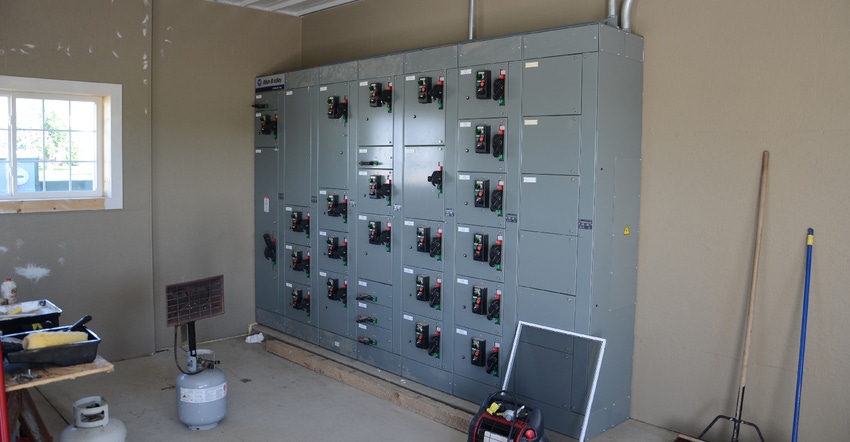
When harvest is done, the same kind of thorough cleaning that most farmers perform on their combines is even more valuable on a dryer and grain handling equipment, says Gary Woodruff, district sales manager and grain conditioning expert for GSI. People think to power-wash the combine, but they don’t typically think to clean out the dryer.
“Dryers and grain handling equipment see more exposure to weather than equipment that gets stored in the machinery shed,” Woodruff says. “Before this cleaning is started, all power must be shut down, and ‘lock out, tag out’ procedures should be in place on electrical switches.”
Clean out, clean up
Woodruff offers general suggestions for cleaning grain handling equipment. Follow specific maintenance instructions from the manufacturer.
“Police the area around the receiving area and storage bin,” he says. “Get all the spilled grain and other debris cleaned up so you don’t draw in vermin. Consider bait stations to further control them.”
Wherever grain is exchanged from one device to the next, open those areas and clean them, Woodruff says.
Make sure all “weep” holes are open. If it’s safe, consider leaving some areas open so water cannot accumulate.
Here are five specific areas to check:
1. Dump area. This may be the pit conveyor, the dump pit or just the receiving area of a transport auger.
2. Leg boots. Open and thoroughly clean, because these are a prime source of food for various rodents, insects and mold.
3. Distributors. Clean these immediately, before debris can harden and make the task harder.
4. Dead heads. Located on top of bins, most have a removable plate that allows grain that sits there as a buffer to be removed. Some dead heads are self-cleaning, but they need to be inspected to make sure the openings haven’t plugged.
5. Dryer. Open it and clean. Check the incoming auger from the wet bin for debris. Open and clean the metering system area. Cleaning now will be far easier than next summer. Clean the plenum, and don’t forget the fan and heater areas.
Shut down power and follow lock out, tag out procedures. Then thoroughly clean control panels. Any dirt accumulated on electrical components reduces the life of those components, and if bad enough, allows arc over damage. It also leads to deterioration of the cabinets themselves. Pressurized air, brushes and cloths can all help here.
Grease and inspect
Once cleaning is complete, grease all bearings that aren’t sealed and lubricate all chains, Woodruff says. Lubricate both drive and conveyor-based systems, plus other wear points that require it. Do this as soon after harvest as possible.
“Many aren’t aware that if chain conveyors aren’t exercised once a month, particularly if not cleaned and kept water-free, the chain can rust tight,” Woodruff says. This is a big deal particularly for chains only used once a year and conveyors moving wet grain.
“If a chain rusts solid and then is turned on, links can stick and cause paddles to bend or rip off chain links. This damage will not be covered by warranty. Exercising this equipment is considered part of normal maintenance,” he explains.
The most important part of this inspection and cleaning should be keeping any eye out for any safety equipment that has been damaged during harvest, Woodruff says. Make sure all shields and equipment removed during inspection and cleaning have been put back in place.
About the Author(s)
You May Also Like




